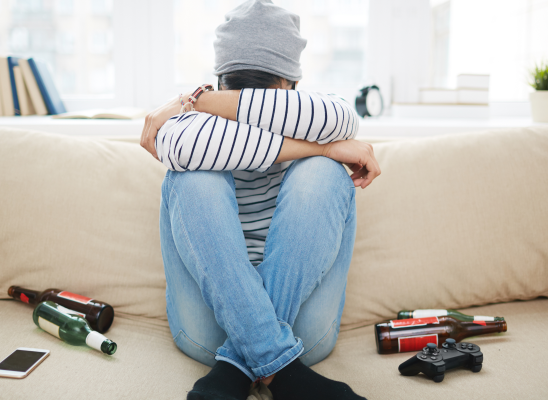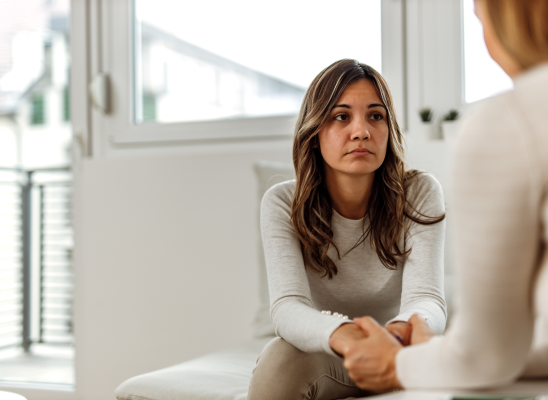
Online test
Find out the severity of your symptoms with this free online test
ERP stands for Exposure and Response Prevention, but it's often simply referred to as "exposure therapy." In the context of treating Obsessive-Compulsive Disorder (OCD), the word "exposure" refers to the process of gradually and safely confronting situations or thoughts that trigger anxiety or distress. These are the situations that people with OCD typically avoid or try to control through compulsive behaviors, like washing, checking, or counting. By facing these fears in a controlled way, the goal of exposure therapy is to reduce anxiety over time and help individuals break free from the cycle of compulsions that keep the OCD alive.
Despite its proven effectiveness, many people with OCD—or those considering therapy—have common fears and misconceptions about exposure therapy. These worries can make them hesitant to start or continue treatment. In this discussion, we’ll explore these fears and debunk some myths and provide some relevant examples to help remove some of the mystery.
Exposure therapy will make my anxiety worse!
One of the most common fears about exposure therapy is that it will make the anxiety and distress worse instead of better. It’s understandable to be concerned that confronting fears might cause even more panic and overwhelm.
While it’s true that exposure therapy can feel intense in the short term, research has shown that it helps to reduce anxiety in the long term. Exposure therapy is designed to be gradual and systematic, which means it starts with less distressing exposures and works up to more challenging ones over time. By repeating the exposure individuals build resilience and learn that their fears, though intense, are not as dangerous as they seem.
For someone with contamination OCD (like the fear of germs on door handles), exposure therapy might start with something easy, like touching a clean object, maybe a chair. From there, they'd gradually work up to touching a door handle, and eventually, a public restroom door handle. The key is taking it step by step, so it doesn't feel too overwhelming. After doing this a few times, the anxiety starts to fade. Over time, they learn that the thing they feared—like that door handle—won’t actually harm them.
Exposure therapy will make my OCD worse!
Another fear is that exposure therapy will increase the intensity of the obsessions associated with OCD. Many individuals are concerned that by exposing themselves to the feared situation or thought, they will feel more compelled to perform rituals or compulsive behaviors.
While exposure therapy can be uncomfortable, it’s important to understand that it is specifically designed to help individuals reduce their reliance on compulsive behaviors. The key element of exposure therapy is “response prevention.” This means that while confronting fears, the person is taught not to perform the compulsive ritual or behavior they usually do to reduce their anxiety. Over time, the individual learns that anxiety will naturally subside without the need for the compulsive response.
Someone with health anxiety OCD might constantly worry about having a serious illness and feel the urge to check their symptoms all the time. In exposure therapy, they might be asked to stop checking, like not googling symptoms or taking their temperature. At first, it’s really tough and the anxiety feels huge. But with practice, they’ll notice the anxiety fades on its own, and they don’t need to check or reassure themselves. Over time, they’ll realize their worst fears don’t come true and they can manage the anxiety without the compulsion.
Exposure therapy is too overwhelming! It will be unbearable!
Many people with OCD worry that exposure therapy will be too much to handle. Since OCD often brings constant anxiety, the thought of facing your biggest fears can seem overwhelming.
The reality is, exposure therapy doesn’t throw you into overwhelming situations all at once. It’s a gradual, step-by-step process that starts with smaller, more manageable exposures and works up to tougher ones. Therapists will help create a list of fears, starting with the least distressing, so you can build up tolerance and confidence without feeling like you’re diving in headfirst.
For someone with perfectionism OCD, the need to make everything "perfect" can lead to repeating tasks endlessly. In exposure therapy, they might be asked to leave a task slightly imperfect, like writing a note with a small mistake or leaving their desk a little messy. At first, this will feel really uncomfortable and cause anxiety. But by continuing to face these small imperfections, the anxiety will gradually decrease.
Exposure therapy is just about “getting used to” the anxiety.
Many people believe that exposure therapy is simply about tolerating anxiety and “getting used to” it. This misconception can make the therapy feel unappealing because the focus seems to be just on enduring discomfort without any long-term benefit.
While it’s true that exposure therapy involves confronting anxiety-provoking situations, the goal is not just to “get used to” anxiety but to learn that the feared situations or thoughts are not as dangerous as they seem. Instead of avoiding the feared situation or engaging in rituals, you face it. This creates a new learning experience. You understand that you are strong enough to do it and you learn that your feared outcome does not come true.
In addition, in a lot of cases, exposure therapy helps individuals learn that their anxiety will naturally decrease over time without the need for compulsive behaviors. This process is based on the principle of habituation, which means that repeated exposure reduces the intensity of the anxiety response.
For a person who has an OCD based fear of harming others, exposure therapy might involve imagining scenarios in which they might unintentionally harm someone. Over time, these imagined scenarios will provoke less anxiety as the individual realizes that the anxiety itself is not a sign of impending harm and does not need to be acted on through compulsions like checking or seeking reassurance.
Instead of helping, ERP will make me too vulnerable!
A common myth about Exposure and Response Prevention (ERP) for OCD is that it could lead to actual harm. For example, someone with OCD might worry that if they check a lock only once, a robber will break in, or if they chop a salad near their child, they might accidentally hurt them. These thoughts can feel very real, and the idea of facing them can seem dangerous. But ERP is actually meant to challenge those exaggerated fears in a safe, controlled way, helping people see that their worries are often not as realistic as they seem.
In ERP, the goal isn't to have someone prove they can handle the situation if their fear actually happens. Instead, it's about facing those distressing thoughts without resorting to safety behaviors, like checking locks repeatedly or avoiding situations altogether. Over time, the person learns that the worst-case scenarios they’re afraid of are actually very unlikely to happen, or at least not as bad as they imagine. It’s about showing that the fear itself is exaggerated, not proving they can cope with a feared event.
ERP doesn't encourage doing anything dangerous; it helps people get more comfortable with discomfort and regain control over their thoughts and actions. By resisting compulsions and letting the anxiety fade naturally, they break the cycle of fear, reduce the intensity of their anxiety, and take back their lives without relying on irrational behaviors.
Conclusion
Exposure therapy is a proven treatment for OCD that can help individuals break free from the cycle of compulsions and obsessive thoughts. While it may seem daunting, understanding and addressing common fears about exposure therapy can help reduce anxiety and encourage participation in treatment.
By focusing on gradual exposure, response prevention, and coping strategies, individuals can learn to manage their OCD symptoms and improve their quality of life. It’s important to remember that while the process may be uncomfortable at times, it’s a valuable and effective tool for long-term recovery. And yes, ERP is safe when done correctly, and it can lead to meaningful, lasting improvements in mental health.
If you’re ready to take the first step toward managing your OCD, StopOCD can guide you through safe, effective Exposure Therapy. Their team offers support, strategies, and encouragement every step of the way. Reach out today here and start reclaiming your life from OCD.
References
- Psychology Today. (n.d.). Exposure and response prevention. https://www.psychologytoday.com/us/therapy-types/exposure-and-response-prevention
- Gillihan, S. J., Williams, M. T., Malcoun, E., Yadin, E., & Foa, E. B. (2012). Common Pitfalls in Exposure and Response Prevention (EX/RP) for OCD. Journal of Obsessive-Compulsive and Related Disorders, 1(4), 251. https://doi.org/10.1016/j.jocrd.2012.05.002
- Law, C., & Boisseau, C. L. (2019). Exposure and response prevention in the treatment of obsessive-compulsive disorder: Current perspectives. Psychology Research and Behavior Management, 12, 1167–1174. Retrieved from https://pmc.ncbi.nlm.nih.gov/articles/PMC6935308/
- Racz, J. I., Bialocerkowski, A., Calteaux, I., & Farrell, L. J. (2024). Determinants of exposure therapy implementation in clinical practice for the treatment of anxiety, OCD, and PTSD: A systematic review. Clinical Child and Family Psychology Review, 27(2), 317–341. Retrieved from https://pmc.ncbi.nlm.nih.gov/articles/PMC11222222/
- Becker-Haimes, E. M., Stewart, R. E., & Frank, H. E. (2022). It’s all in the name: Why exposure therapy could benefit from a new one. Current Psychology. Advance online publication. Retrieved from https://pmc.ncbi.nlm.nih.gov/articles/PMC9161762/
Online test
Find out the severity of your symptoms with this free online test
Start your journey with StopOCD
Take control of your life and find freedom from OCD through professional therapy and evidence-based cognitive behavioral techniques.
Start Now



